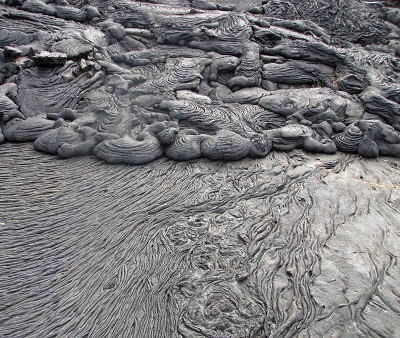Congratulations to the following 2011 Evolving Earth Student Grant recipients:
Allen, Sarah E.
University of Florida Board of Trustees Division of Sponsored Research
“The Taxonomy, Paleoclimate, and Paleoecology of a flora from the Eocene Bridger Formation, Southwestern Wyoming”
This project will explore the taxonomy, paleoclimate, and paleoecology of fossil floras preserved in the early/middle Eocene Bridger Formation, southwestern Wyoming. In addition to identifying the taxa, I will compare their occurrence within the Bridger Formation and to nearby paleobotanical localities of similar age. The flora also provides an opportunity to examine the local climate ~50 ma and compare the estimates to those already present from the sediments and vertebrate fossils. Finally, I hope to clarify the depositional environment and ecological setting.
Collette III, Joseph H.
The Regents of the University of California
“A Bridge Too Far? Late Cambrian Laurentia – Gondwanan Distribution of Saukiid Trilobites, their Evolution, and Possible Mechanisms of Dispersal”
This project will undertake a thorough systematic revision of the Late Cambrian saukiid trilobites that inhabited Laurentia and Gondwana during the late Cambrian period (ca. 500-490 million years ago). In order to accomplish this goal, a large number of saukiid taxa, including their exclusively Laurentian relatives, the dikelocephalids, will be examined, photographed, and subjected to phylogenetic and paleogeographic analysis to assess whether morphological differences between these groups may account for their disparate geological distribution.
Compton, Tracy
University of California, Davis/Department of Geology
“Discovering offset landforms to build a Holocene slip history along the Mojave section of the San Andreas Fault (MSAF) using ground-based LiDAR and virtual-reality visualization”
This project involves using ground-based LiDAR survey equipment to search for subtle and therefore, undiscovered offset landforms along the Mojave section of the San Andreas Fault (MSAF). We will collect high-resolution topographic data of offset landforms along the fault and using new virtual-reality visualization tools to enable rapid analysis of this data. This dataset, when combined with age data of the offsets, will produce a slip history of the MSAF. This refined and accurate Holocene slip history will reveal a detailed slip behavior of the fault, including periods of time in which the fault may have slipped at variable rates. This project will produce a more complete record of offset landforms along the MSAF, which is the first step in determining the temporal record of the fault.
Dineen, Ashley A.
University of Wisconsin-Milwaukee
“When Did Life Recover from the End-Permian Mass Extinction”
The end-Permian mass extinction is often regarded as the most devastating loss of life in Earth’s history. Evidence suggests that ecological devastation following this event was protracted and may have lasted 5 million years into the Middle Triassic (Anisian). This project aims to establish the spatial and temporal nature of ecosystem recovery following the end-Permian mass extinction by examination of Lower and Middle Triassic paleoecology in the Virgin Limestone Member of the Moenkopi Formation (Spathian-Anisian), and the Star Peak Group Prina Formation (Spathian-Ladinian) in western and southeastern Nevada. This project will serve as one of the several global localities to be included in my Ph.D. dissertation; other proposed study areas include northern Italy (Dolomites) and western Australia. Field work in Guizhou Province, south China will take place August 2011.
Huttenlocker, Adam
University of Washington
“An integrative assessment of body size and growth patterns in South African therocephalians (Therapsida: Eutheriodontia) before and after the end-Permian extinction”
A relatively continuous fossil record and well-resolved phylogenetic relationships make therapsid fossils ideal to study major trends in vertebrate evolution. Notwithstanding an abundance of morphological data, little remains known about the paleophysiology and growth patterns of therocephalians and cynodonts (or Eutheriodontia, a group that includes mammals). I propose to apply histological methods to therocephalians and cynodonts to reveal information about growth and the phylogenetic distributions of bone microstructural and life history traits in the ancestors of mammals before and after the end-Permian mass extinction. Travel funding requested during this phase will facilitate acquisition of therocephalian specimens in South African collections and histological processing at the National Museum, Bloemfontein, during late June-July 2010.
Jud, Nathan
University of Maryland
“Diversity relative abundance and environmental distribution of the early angiosperms in Western North America: Cloverly Formation, Bighorn Basin, WY”
The invasion of western North America by flowering plants occurred during the Aptian-Early Albian. The deposits of this age in the Cloverly Formation lack angiosperms at the base, but contain angiosperms near the top. In this study I will examine changes in diversity before and after the arrival of flowering plants in what is now Wyoming Associations between angiosperms lineages and habitat type will allow me to test hypotheses regarding the ecology of early angiosperms. Through qualitatively sampling fossil leaves I will construct relative abundance distributions and determine whether early angiosperms were rare components of Cretaceous ecosystems during the early phases of their diversification in North America, or whether angiosperm abundance increased rapidly after their arrival.
Light, Melissa
Miami University
“Palynological reconstructions of early Eocene environmental and biotic perturbations in the Wind River Basin, Wyoming, USA”
The effect of early Cenozoic geologic perturbations on evolutionary trajectories in the sedimentary basins of Wyoming can be extensively studied using palynomorphs. This study focuses on ecological trends in the Wind River Basin during the early Eocene. As this location has not been systematically studied paleobotanically, we will examine the pollen-rich lithofacies found widespread throughout the area. With this information, it will be possible to contrast biotic changes in the Wind River Basin to those previously documented in the Bighorn and Green River Basins. Pollen is very responsive to climatic and environmental changes, which makes it ideal to answer the following questions: (1) How do palynofloral changes in diversity and composition reflect large and small-scale changes, both geographically and stratigraphically? (2) Did Laramide geologic and environmental perturbations affect plant diversity and evolutionary trajectories? We plan to study multiple locations of varying age and depositional environment so a comprehensive history of the ecology can be accurately reconstructed.
Morschhauser, Eric
University of Pennsylvania
“Phylogenetic placement of Auroraceratops and a revision of Basal Neoceratopsia”
A large sample consisting of over eighty exquisitely preserved skeletons and skulls have been uncovered. These animals belong to a new species of early horned dinosaur in the genius Auroraceratops. A comprehensive phylogenetic analysis is proposed to place them in their evolutionary context. This will necessitate a species-level review of the basal published species of the clade Neoceratopsia, the larger group within horned dinosaurs, which contains the ceratopsids, the familiar large horned dinosaurs such as Triceratops, which were key herbivores in North American ecosystems at the end of the Cretaceous. There has been a rapid growth in this group in recent years, with over fourteen new species published since the last review in 2002 and more to come. Both specimen-level and species-level analysis would be used. Specimen-level analyses will allow for the first direct testing of diagnostic characters of basal neoceratopsian species using cladistic methodology.
Redman, Cory M.
Texas A&M University
“Assessing the role of tropic structure in extinction patterns during the Cretaceous-Paleocene Mass Extinction”
The Western Interior of North America is the only known region on the globe that has the stratigraphic resolution to accurately assess changes in the community structure and tropic levels of terrestrial ecosystems across the Cretaceous-Paleocene (K-P) mass extinction event. Despite the numerous studies that have come from this area, most have focused on a qualitative description of the taxonomic change across the boundary. However, the magnitude of change as measured by taxonomy-based studies may not reflect the magnitude of ecological change caused by the same event. The objective of this proposal is to qualitatively characterize changes in the community structure of terrestrial ecosystems before and after the K-P mass extinction event, using whole assemblage, rank abundance curves (RACs) of vertebrates and plants. RACs are an ecological technique that describes the health of an ecosystem based on species abundance distributions.
Tzanova, Alexandrina
Brown University
“Investigating Cooling in the Northern Hemisphere during the Late Miocene (6-12Ma) and the Implications for Northern Hemisphere Glaciation”
I have observed a previously undocumented abrupt cooling at ~8 ma. It is documented in my late Miocene (12.9-6.3Ma), first-of-its kind, continuous, alkenone-based sea surface temperature (SST) record from the Mediterranean Sea. Additionally, my preliminary data from ODP site 883 has shown that it is echoed as far as the North Pacific. This cooling event is concurrent with a global shift in the terrestrial C3/C4 photosynthetic pathway and marks a previously undocumented transition out of the warm Miocene climate regime. I hypothesize that it was a necessary precursor to northern hemisphere glaciation and should be observable on a hemispheric to global scale. I propose to generate an alkenone paleothermonetry SST record (~6-12Ma) at ~50kry resolution from ODP site 982. It will supplement my already existing data from the Mediterranean Sea and the North Pacific. ODP 982 will help resolve the temporal and spatial development of the cooling, verify and characterize the distribution of this event across the Northern Hemisphere and provide a data anchor in the North Atlantic.

